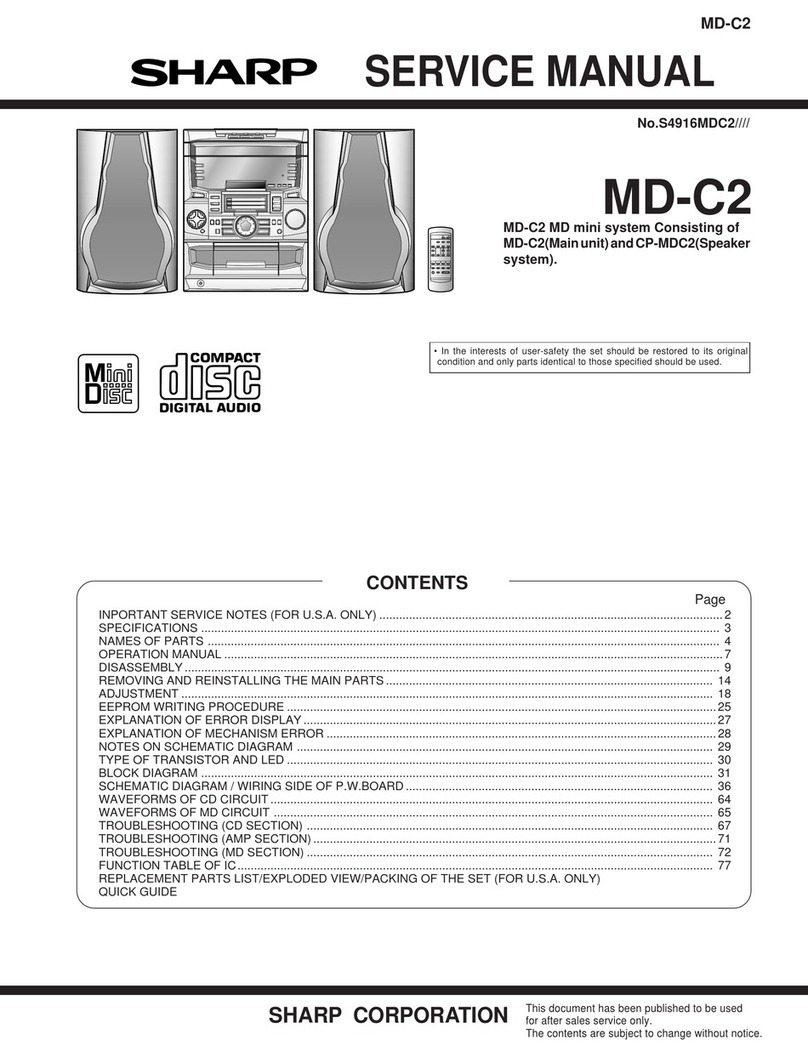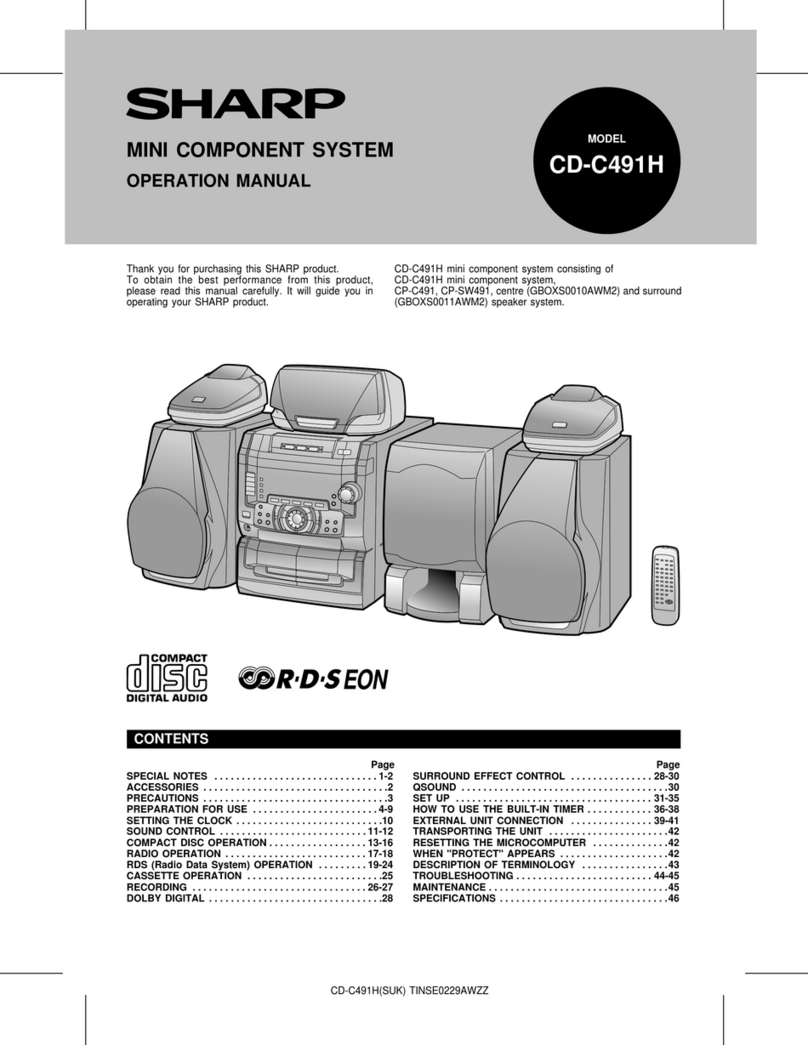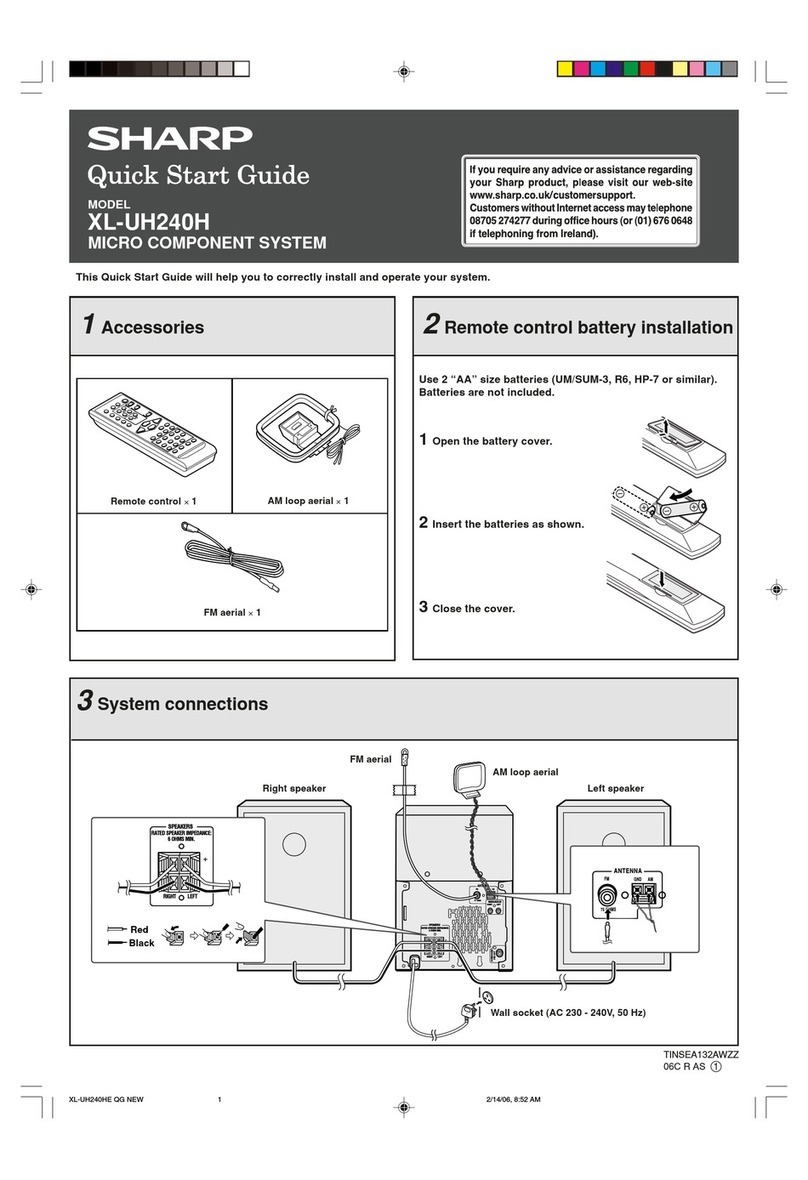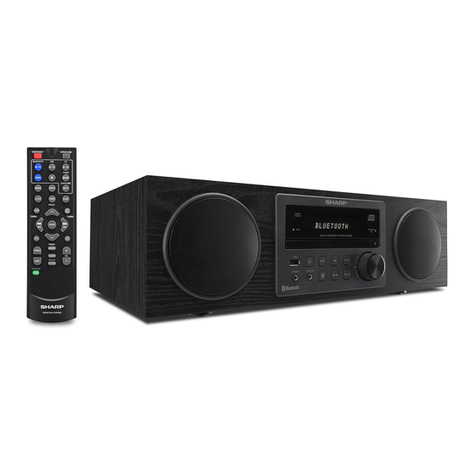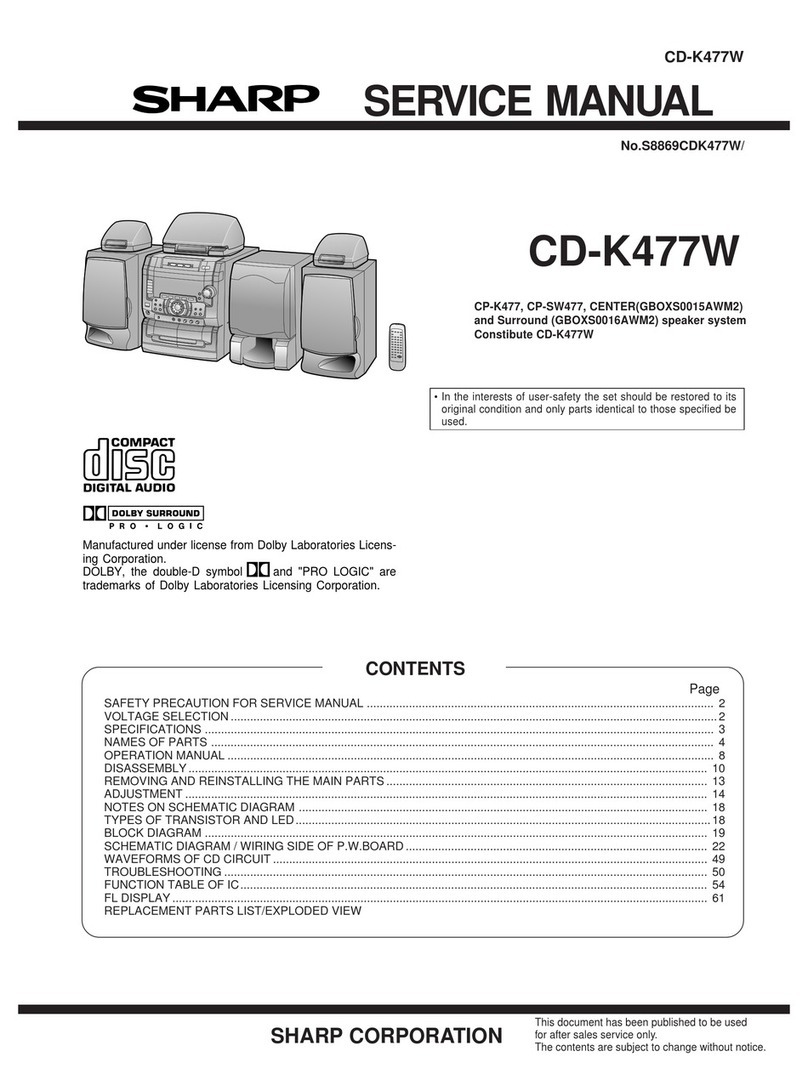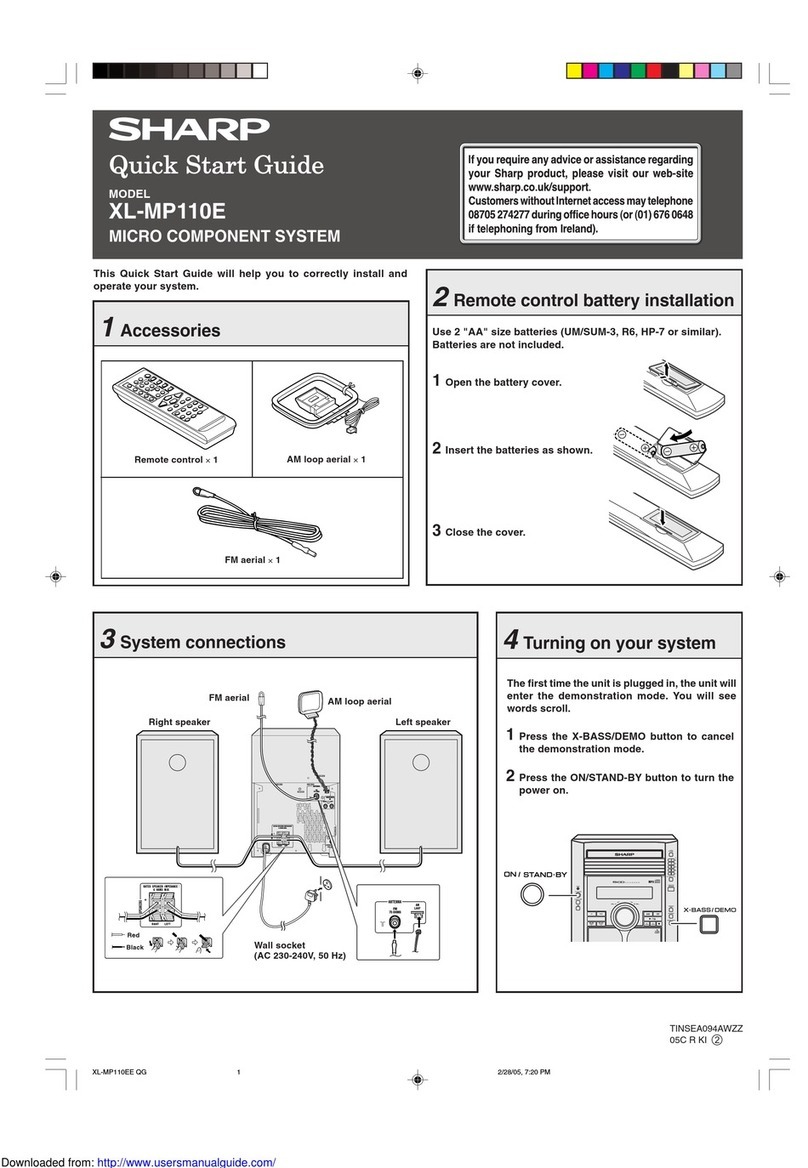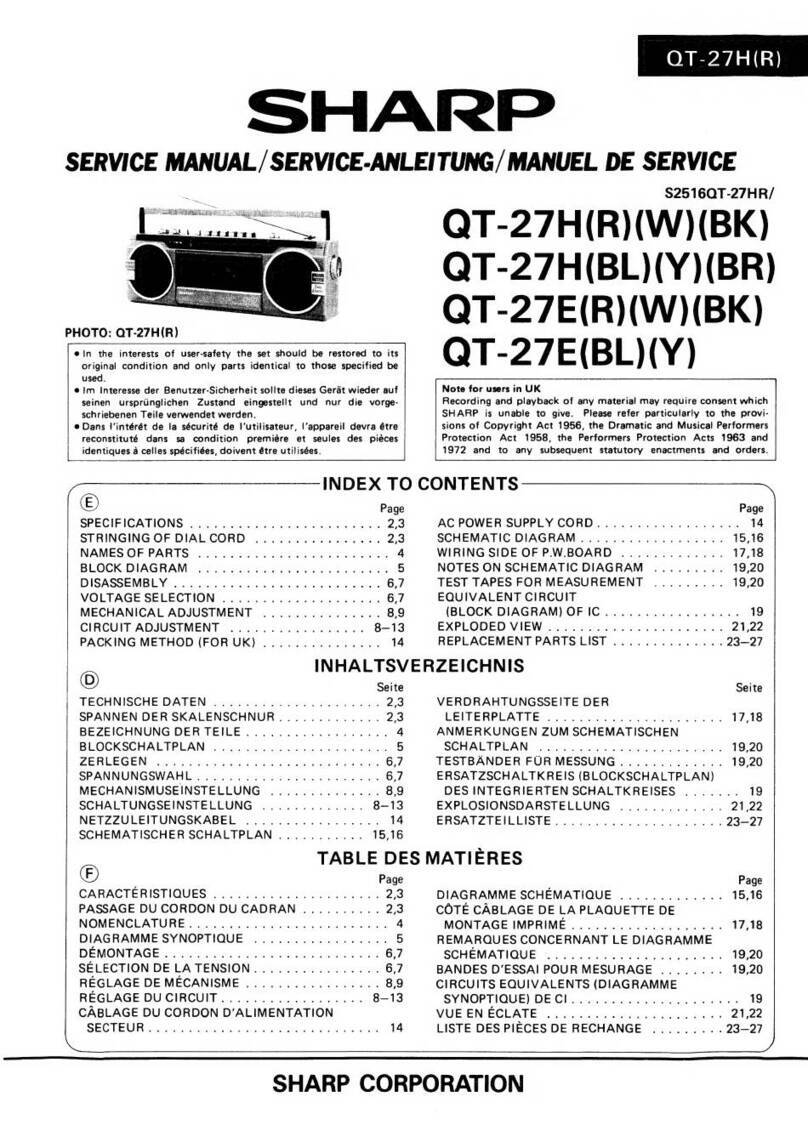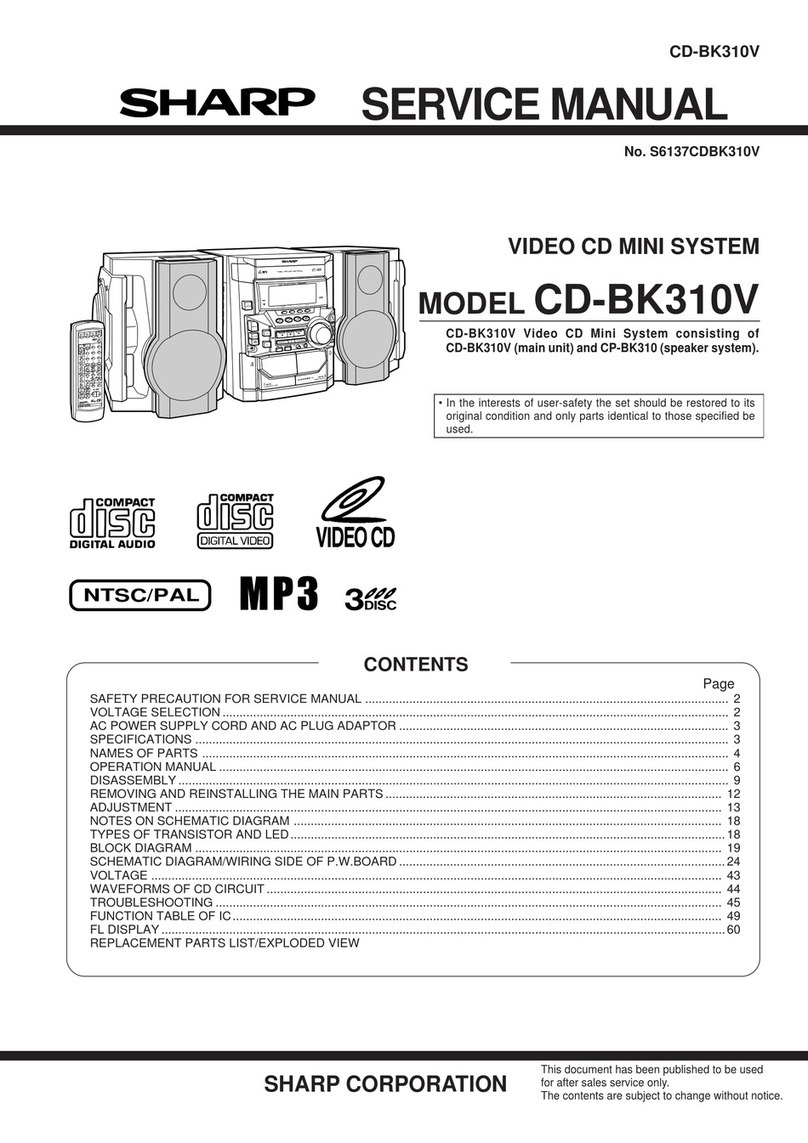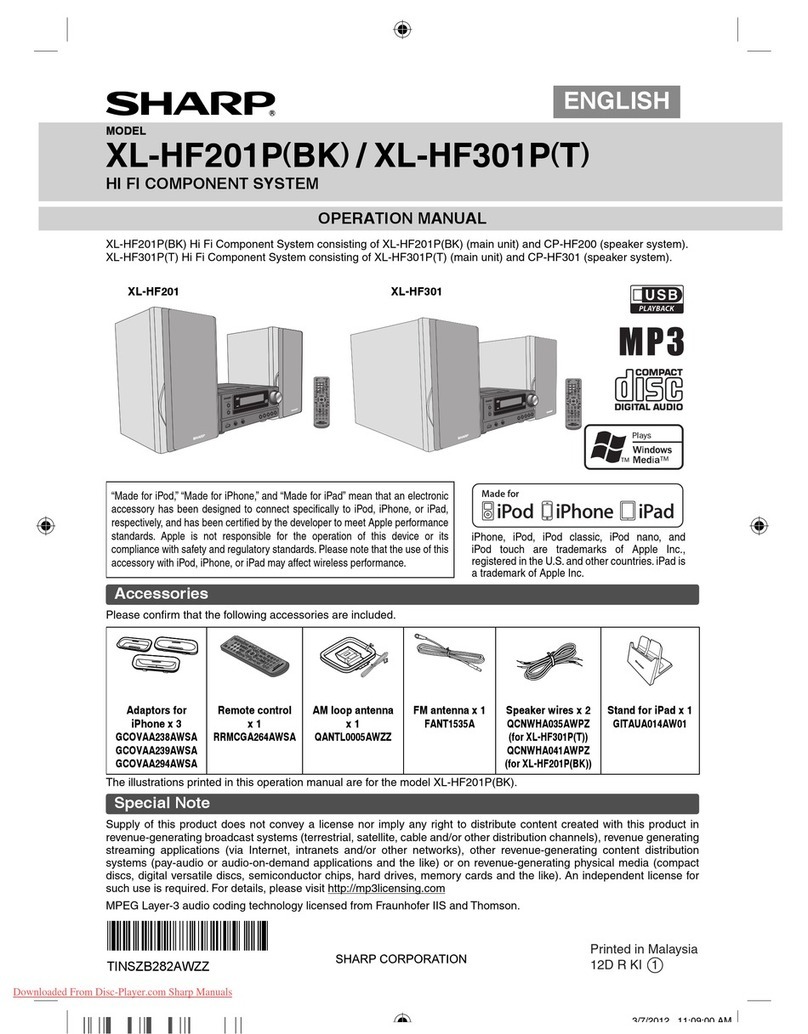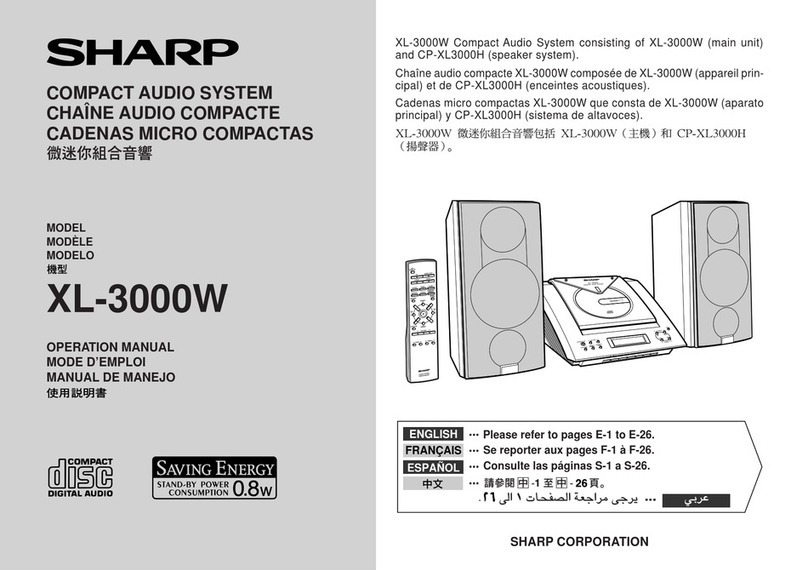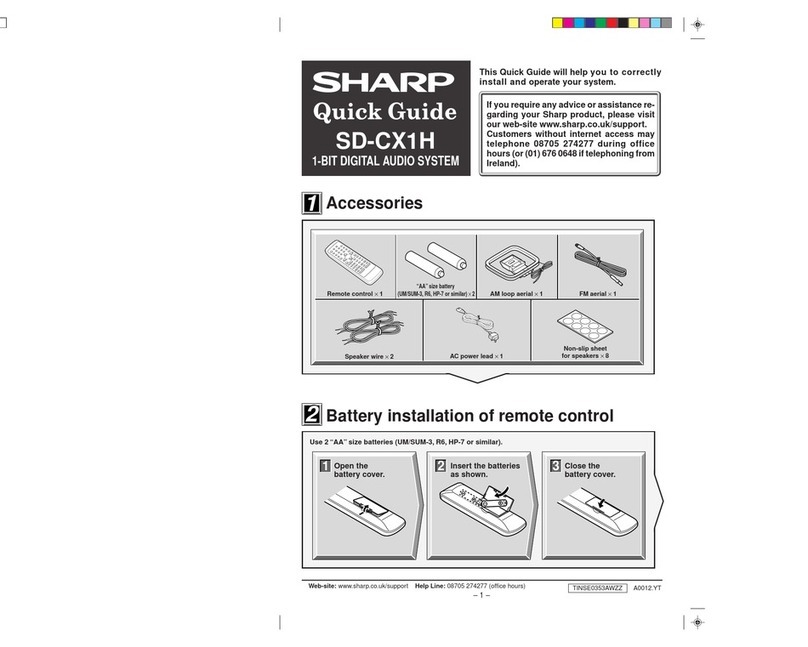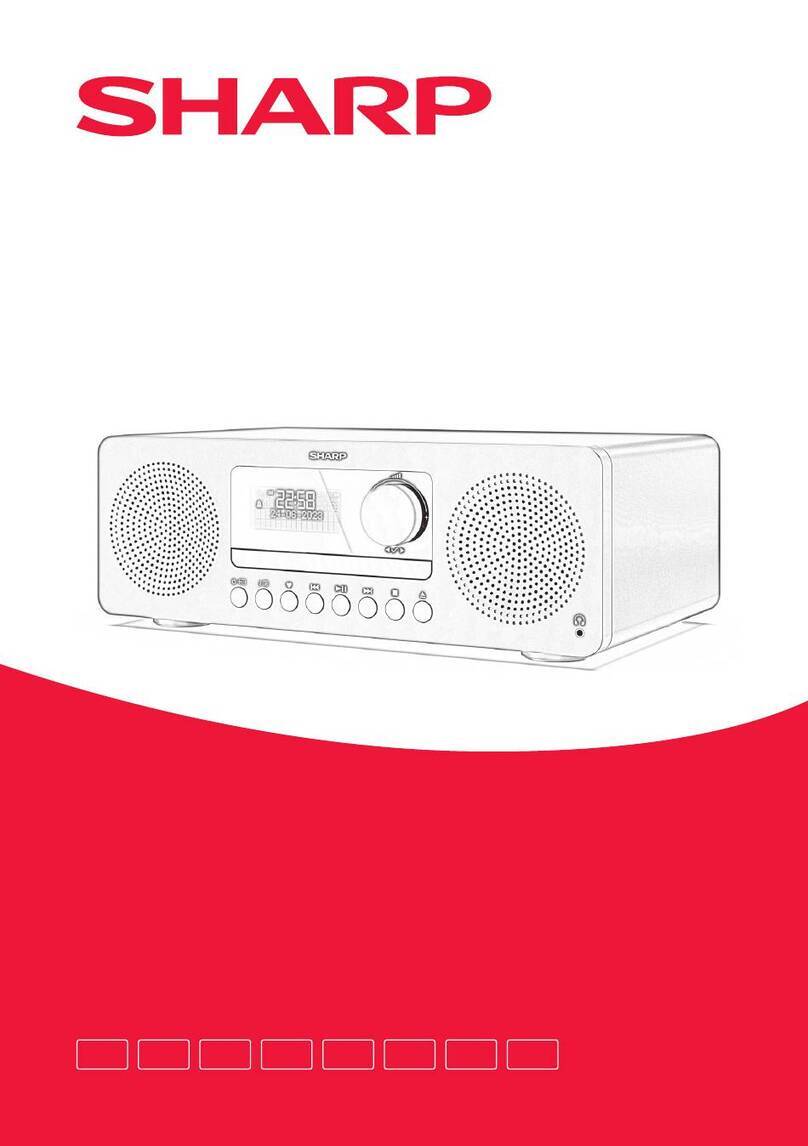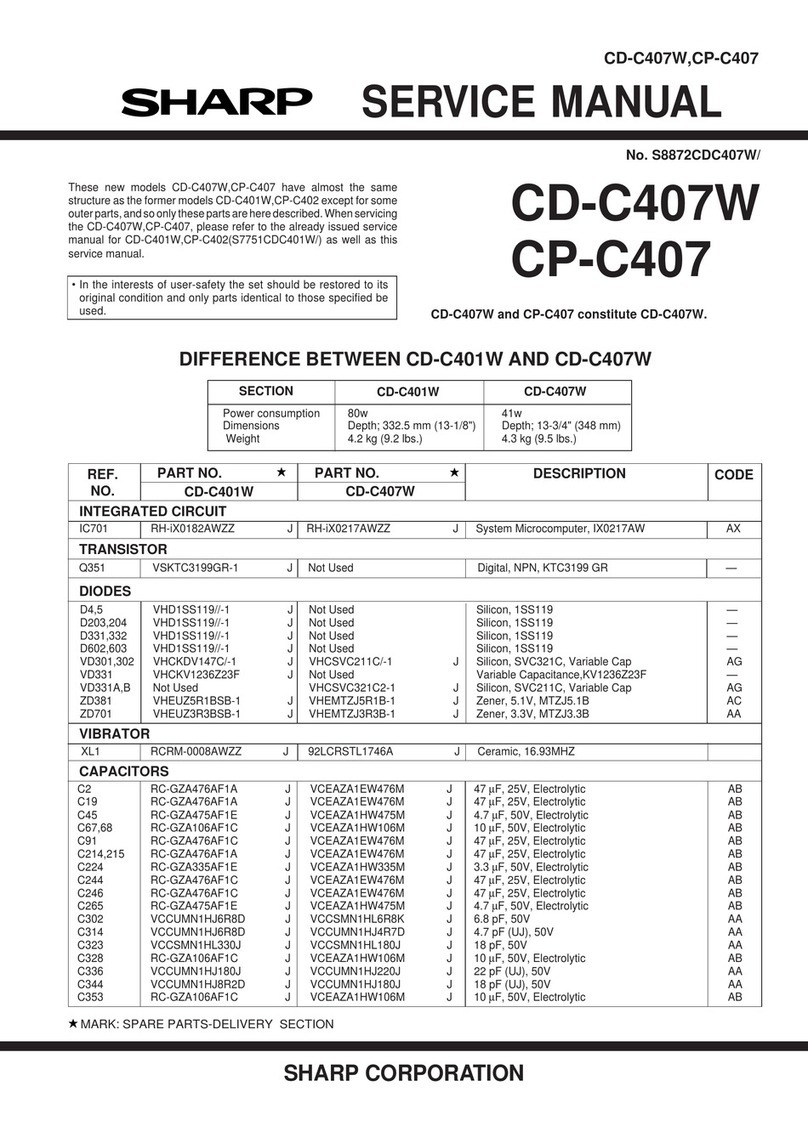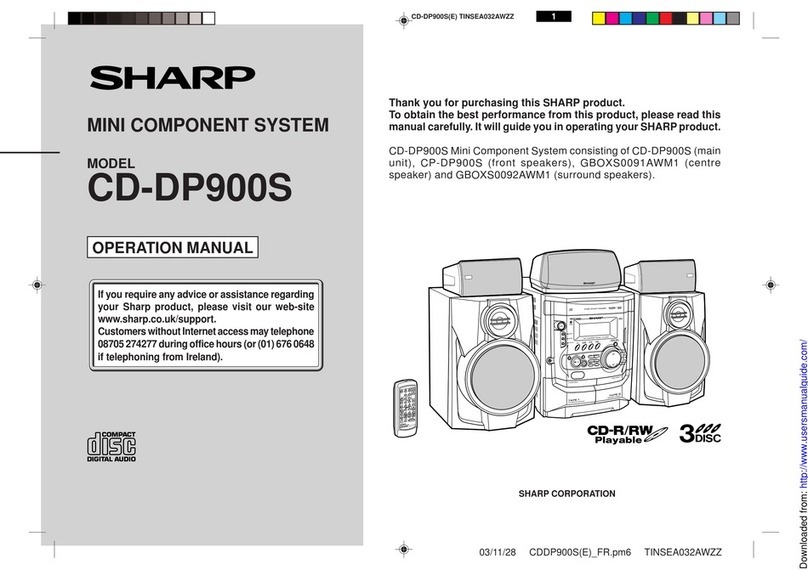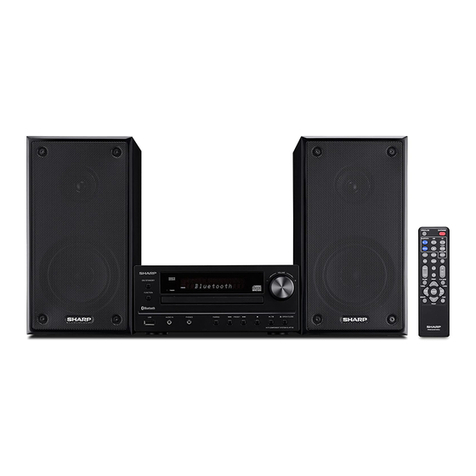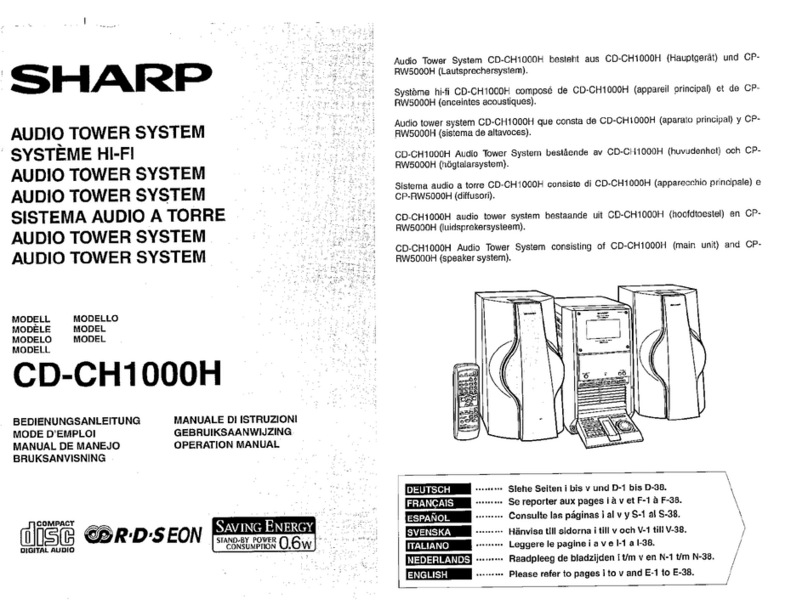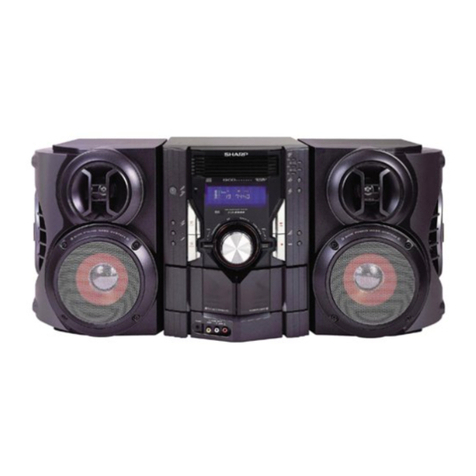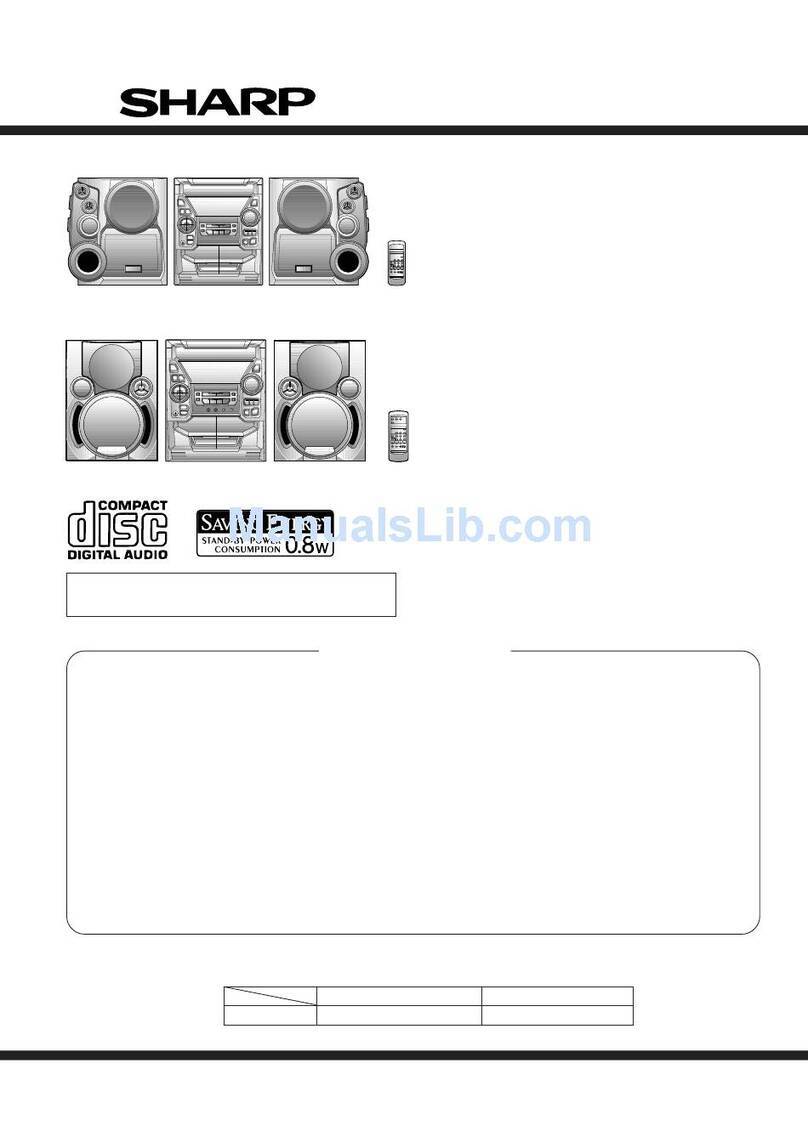
MD-X60
– 2 –
FOR A COMPLETE DESCRIPTION OF THE OPERATION OF THIS UNIT, PLEASE REFER
TO THE OPERATION MANUAL.
IMPORTANT SERVICE NOTES
BEFORE RETURNING THE AUDIO PRODUCT
(Fire & Shock Hazard)
Before returning the audio product to the user, perform the following
safety checks.
1. Inspect all lead dress to make certain that leads are not pinched
or that hardware is not lodged between the chassis and other
metal parts in the audio product.
2.Inspectallprotectivedevicessuchasinsulatingmaterials,cabinet,
terminal board, adjustment and compartment covers or shields,
mechanical insulators etc.
3. To be sure that no shock hazard exists, check for leakage current
in the following manner.
* Plug the AC line cord directly into a 120 volt AC outlet.
* Usingtwoclipleads,connecta1.5kohm,10wattresistorparalleled
by a 0.15µF capacitor in series with all exposed metal cabinet
parts and a known earth ground, such as conduit or electrical
ground connected to earth ground.
* Use a VTVM or VOM with 1000 ohm per volt, or higher, sensitivity
tomeasuretheACvoltagedropacrosstheresistor(Seediagram).
* Connect the resistor connection to all exposed metal parts having
areturnpathtothechassis(antenna,metalcabinet,screwheads,
knobs and control shafts, escutcheon, etc.) and measure the AC
voltage drop across the resistor.
All check must be repeated with the AC line cord plug connection
reversed.
Any reading of 0.3 volt RMS (this corresponds to 0.2 milliamp. AC.)
or more is excessive and indicates a potential shock hazard which
must be corrected before returning the audio product to the owner.
TO EXPOSED
METAL PARTS
CONNECT TO
KNOWN EARTH
GROUND
TEST PROBE
0.15 µ F
1.5k ohms
10W
VTVM
AC SCALE
Specifications for this model are subject to change without
prior notice.
SPECIFICATIONS
●MiniDisc recorder section
Type: MiniDisc recorder
Signal readout: Non-contact, 3-beam semi-conductor laser
pickup
Audio channel: Stereo; 2 channels
Monaural; 1 channel (long-time recording
mode)
Frequency response: 20 - 20,000 Hz
Rotation speed: 400 - 900 rpm CLV, Approx
Quantization: 16-bit linear
Filter: 8-times oversampling digital filter
Error correction: ACIRC (Advanced Cross Interleave Reed-
Solomon Code)
Coding: ATRAC (Adaptive TRansform Acoustic
Coding)
Recording method: Magnetic modulation overwrite method
D/A converter: 1-bit D/A converter
Sampling frequency: 44.1 kHz
Wow and flutter: Unmeasurable
(less than 0.001% W. peak)
Signal/noise ratio: 95 dB (1 kHz)
Dynamic range: 90 dB (1 kHz)
●Compact disc player section
Type: 3-disc multi-play compact disc player
Signal readout: Non-contact, 3-beam semi-conductor laser
pickup
Rotation speed: 200 - 500 rpm CLV, Approx.
Error correction: CIRC (Cross Interleave Reed-Solomon
Code)
Quantization: 16-bit linear
D/A converter: 1-bit D/A converter
Filter: 8-times oversampling digital filter
Frequency response: 20 - 20,000 Hz
Signal/noise ratio: 95 dB (1 kHz)
Dynamic range: 90 dB (1 kHz)
Wow and flutter: Unmeasurable
(less than 0.001% W. peak)
●Tuner section
Frequency range: FM; 87.5 - 108 MHz
AM; 530 - 1,720 kHz
Sensitivity: FM; 2.5 µV (75 ohms unbalanced)
AM; 650 µV/m
●Cassette deck section
Type: Compact cassette tape
Frequency response: 50 - 14,000 Hz (Normal tape)
50 - 15,000 Hz (CrO
2
tape)
Motor: DC motor with electronic governor ×1
Signal/noise ratio: 50 dB (Recording/Playback, Dolby NR off)
Dolby NR effect; 10 dB
(at over 5 kHz)
Bias and erasure
system: AC
Tape speed: 1-7/8 ips. (4.76 cm/sec.)
Wow and flutter: 0.15 % (WRMS)
Heads: Record/playback ×1
Erase ×1
●General
Power source: AC 120 V, 60 Hz
Power consumption: 101 W
Output power: 40 watts per channel minimum RMS into 6
ohms from 60 Hz to 20 kHz with no more
than 10 % total harmonic distortion
Input terminals: MD IN/AUX (Analog-1); 500 mV/47 kohms
Auxiliary (Analog-2); 500 mV/47 kohms
Auxiliary (Digital); optical
Output terminals: Auxiliary; 2.0 V/1 kohm
Headphones; 16 - 50 ohms
(recommended; 32 ohms)
Speakers; 6 ohms
Dimensions: Width; 9-1/2" (240 mm)
Height; 13-1/8" (332 mm)
Depth; 12-13/16" (325 mm)
Weight: 19.0 lbs. (8.6 kg)
●Speaker section
Type: 3-way type [6" (150 mm) woofer, 2-1/2" (65
mm) tweeter and super tweeter]
Maximum input power: 100 W
Rated input power: 50 W
Impedance: 6 ohms
Dimensions: Width; 8-1/8" (205 mm)
Height; 13-1/8" (332 mm)
Depth; 12-3/4" (323 mm)
Weight: 9.3 lbs. (4.2 kg)/each
